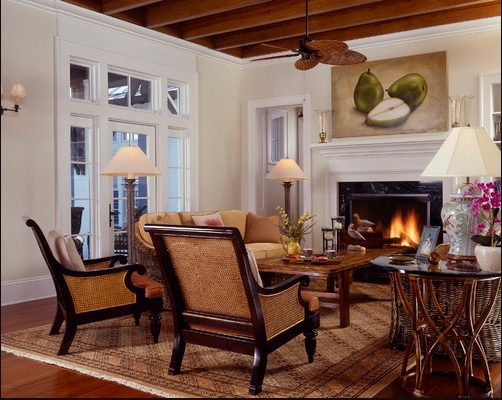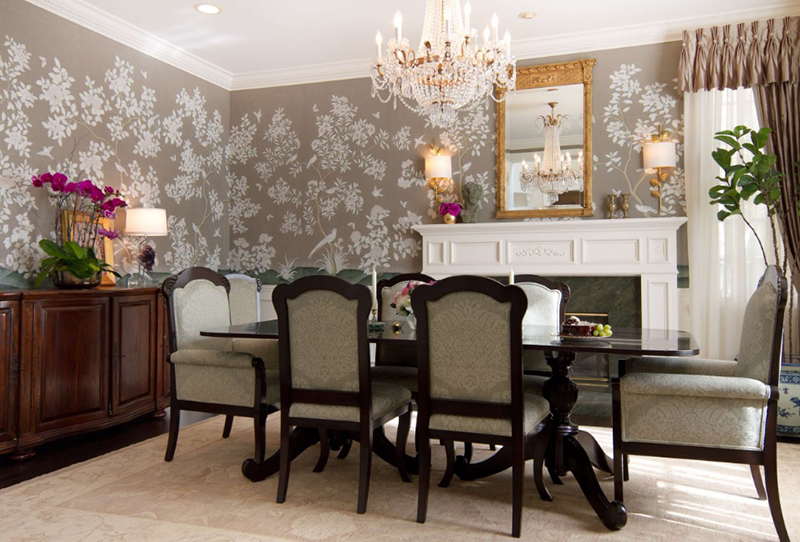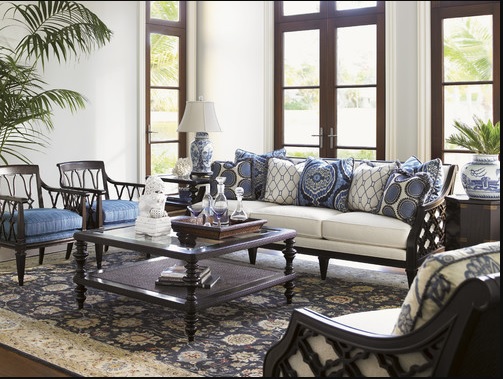Are you interested in giving your home a makeover so that it exudes class and refinement? If this is the case, the British Colonial Style could be an option for you. This approach to interior design has been gaining popularity over the past few years due to the timelessness of its appeal and its capacity to produce an atmosphere that is serene and relaxing. This style has its origins in the countries that were ruled by the British Empire in the past, and it is a synthesis of elements of traditional British design and the exotic influences of the countries that it colonized.
If you are interested in decorating your home in a British Colonial style, you may find that e-design is the best option for you. You can create a comprehensive design plan and source the necessary pieces of furniture and decorative items without leaving the convenience of your own home when you enlist the assistance of a professional interior designer. E-design makes it simple to achieve the British Colonial Style look you’ve been fantasizing about, regardless of where in the world you call home.
The British Colonial Style is a design aesthetic that draws inspiration from the traditional architectural and adornment practices of the countries that were formerly ruled by the British Empire. Creating a space that is both elegant and comfortable is at the heart of this design style, which places an emphasis on the use of natural materials and a variety of textural patterns.
The 17th and 18th centuries, when Britain was expanding its empire and colonizing new territories, are considered to be the birthplace of the British Colonial Style. This period of time also saw the rise of the British Empire. During this time period, British settlers not only brought their own sense of aesthetics with them, but they also adapted to the local cultures and environments that they were exposed to. The distinctive personality of the British Colonial Style can be attributed to the fact that it combines elements of British design with those of local design.
Defining features of British Colonial style
The elegance and serenity of nature are perfectly captured in the British Colonial Style, which is a particular approach to interior design. This design aesthetic is all about bringing the outdoors inside by utilizing natural elements such as dark woods and rattan furniture, as well as lush plants and natural fibers. These components, along with lush greenery, tropical plants, and natural fibers, are frequently combined to produce an environment that is relaxing and inviting.

The British Colonial Style is characterized by the use of a neutral color palette, with soft shades of white, beige, and cream predominating the space. This is another defining feature of the style. However, accents of green, blue, and coral add a touch of warmth and vibrancy to the decor, taking their cues from the lush tropical landscapes of the countries that were formerly a part of the British Empire. The British Colonial Style provides the ideal combination of traditional elements of British design and exotic influences from all over the world, making it the ideal choice whether you want to make your bedroom a place of calm and relaxation or your living room one of chic and style.
The British Colonial Style is a time-honored approach to interior design that continues to be popular today. It is distinguished by the use of furniture pieces that are crafted with clean lines and simple shapes, with an emphasis placed on function rather than form. The primary objective is to design a living space that is not only comfortable and welcoming, but also functional and fashionable at the same time. Woven textiles, such as rattan or jute, are frequently used to add texture and depth to furniture and decorative pieces, which in turn gives the interiors a one-of-a-kind and exotic feel. The use of leather trunks, bar carts, four-poster beds, and canopy beds, as well as teak, mahogany, or bamboo chairs and tables with a dark stain, are characteristics that define this style. Cane bedheads and daybeds also lend an air of refined sophistication and luxurious indulgence to the area. In general, the British Colonial Style is a great option for people who want to add a dash of exotic elegance to their home while still keeping it functional and uncomplicated.

In general, the term “British Colonial Style” refers to a design aesthetic that honors the illustrious past and diverse cultural influences of the countries that were ruled by the British Empire in the past. This style is a great option for anyone who loves the elegance and sophistication of traditional British design combined with exotic influences from around the world. Whether you’re looking to create a living room that is calm and inviting or a bedroom that is chic and stylish, this style can help you achieve either of those goals.
Understanding the Elements of British Colonial Decor
Take a look at what the Madison family received for their dining room.
They desired a traditional dining room that was comfortable, casual, super chic, and traditional so that they could host dinner parties for their friends and family. They were enamored with the aesthetic of the British Colonial era, as well as the coziness of natural fibers and the luster of vintage brass.

On the first try, we were able to perfect the design, but they only had room for one revision. We don’t get asked to create an “Out of Africa” design for the modern era very frequently.
Practical Tips for Incorporating British Colonial Style into Your Home
Look no further than these practical tips if you want to add a touch of sophisticated British colonial style to your home. Incorporating colonial style into your decor is a simple way to add timeless elegance and comfort to your living space. Here are some simple ways to incorporate British colonial style into your interior design.
One of the key elements of this classic British style is the use of natural materials such as teak and mahogany in furniture; wicker or cane furnishings with fan backs and rattan chairs are ideal for any room in the house. In order to create an inviting atmosphere, incorporate these pieces in a variety of colors, shapes, and sizes throughout the home. Adding wooden accents like baskets, trays, and other storage items also helps to make the space feel more authentic. Try adding colorful throws or textured pillows for a splash of color without going overboard.
When it comes to painting walls, neutral colors like beiges, tans, or grays are best for creating a soothing atmosphere that echoes classic British design. Consider a muted damask wallpaper border around the room’s perimeter for added appeal. Bring in some color by incorporating pops of color through accessories such as vintage globe lamps, which also add an appealing warmth while nodding to old-fashioned English charm.
Finally, hang traditional rugs on the floor or walls to add texture to different areas of the home. Many British Colonial homes choose Persian-style carpets because they are luxurious while remaining simple enough not to overpower other pieces in the room. Other rustic fabrics, such as patterned jute fibers, add life to furniture pieces like chaise lounges and ottomans; they also add safety when paired with protective sheepskin rugs near fireplaces and outdoor fire pits! The goal here is to create an understated refinement that looks exquisite but does not compete with other decorations in the area.
For those seeking cozy sophistication, undeniable quality, and nostalgic classic vibes associated with glamorous British Colonial designs, these practical tips will get you well on your way to enjoying a welcome touch of distinguished luxury within your own four walls!

We’re Emma Carole Paradis and Kimberly Carole, the owners and designers of Impeccable Nest, based in Bedford, New Hampshire. A mother-daughter team with a love of design. Originally from Manhattan Beach, California, now based in Bedford, New Hampshire, we bring a Southern California cool and New England tradition to our design. Not only do we work together…we also live together in a multi-generational home…and a home that they are known to design for others.

